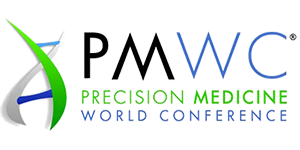Q&A: Brad Gray
Nanostring Technologies
Q: What are some of the key components of the NanostringnCounter Analysis System? What are some of the advantages of the nCounter System over other analytical approaches?
A: Our nCounter Analysis System unlocks massive amounts of biological information from tiny samples. The nCounter platform addresses the challenge of getting the maximum biology from tiny samples that is faced by researchers and diagnostic laboratories alike. Today, one of the most popular uses of nCounter is to profile the expression of up to 800 genes from FFPE samples in the field of precision oncology.
nCounter has many advantages over alternative technologies. It is fully automated and easy-to-use, providing everything a researcher needs to do cost-effective analyses in record time. The platform offers strong analytical performance, with unparalleled sensitivity, and precise quantification. Finally, because the technology is available in an FDA 510k-cleared dual-use format that can be used for both research and in vitro diagnostics, researchers can proceed with the confidence that their discoveries can be seamlessly translated to the clinic.
Q: Why is a multi-omics (DNA, RNA, and protein) approach important and what are some of the hurdles that still exist that need to be overcome for a more comprehensive understanding of biological systems?
A: Through an approach that we call 3D Biology, nCounter can simultaneously profile DNA, RNA, and protein all from a single biological sample on annCounter system. 3D Biology has the potential to allow researchers to identify clinically actionable mutations that can be correlated with unique signatures and cell response, which is critical for biomarker discovery and developing molecular diagnostic signatures.Historically DNA, RNA, and protein measurements on the same sample were performed on three different instruments, leading to wasteful consumption of precious samples and requiring complex analysis of three different data types. In contrast, 3D Biology makes hyper-efficient use of the sample, and yields data in the simple and easily analyzed format of single-molecule counts.
Q: Clinical applications of -omics technologies at a patient level are coming into production for research purposes and may eventually drive forward clinical applicability. What are some of the clinical applications that will hugely benefit from a multi-omics approach?
A: nCounter is quickly becoming the platform-of-choice for validating biomarkers in translational medicine. This is especially true in precision oncology where new classes of immune-oncology drugs can be highly effective in subpopulations of patients, which can be identified using well established biomarkers that have been validated on nCounter. We believe that 3D Biology will grow in importance as precision oncology moves into an era of combination therapies, where physicians will need to pair targeted drugs whose efficacy is predicted by DNA mutations, and immunotherapies whose efficacy is predicted by gene and protein expression.
Q: The nCounter Analysis System has recently been applied to diagnostic use. Can you tell us more about the FDA 510(k) approved Prosigna Breast Cancer Prognostic Gene Signature with the nCounterDx Analysis System?
A:The Prosigna Breast Cancer Assay is an in vitro diagnostic test that help inform the treatment of women with early-stage, hormone-receptor-positive breast. The test is based on the PAM50-gene signature, which was discovered by some of our early nCounter customers.
Prosigna works by analyzing the gene expression pattern in tumor biopsy tissue, and estimating the probability of the cancer recurring. This helps physicians and patients decide how aggressively to treat the tumor, and in particular whether to use adjuvant chemotherapy.
Prosigna was 510k cleared by the U.S. FDA in September 2013, and received the CE marking in Europe in 2012. Since that time, it has been adopted in over 60 different clinical labs in at least 13 countries. In 2016, Prosigna was added to the ASCO Breast Cancer Treatment Guidelines and received Medicare coverage in all 50 states.
Q: NanoString is currently collaborating with MD Anderson with the focus on identifying important biomarkers in immuno-oncology. Can you tell us a bit more about this collaboration, the approach taken, and what outcome is expected by when, and with what clinical applicability? What are the goals and benefits to each collaborator?
A: Our collaboration with MD Anderson is applying our 3D Biology capabilities to develop precision oncology assays, and has several elements. One initiative is demonstrating and benchmarking the ability of our new Solid Tumor DNA Panel to identify cancer driver mutations in a variety of tumor types. Our colleagues at MD Anderson compared its performance to next generation sequencing in a cohort of FFPE samples, and confirmed the ability to accurately call mutations in greater than 98% of samples, down to 5% sensitivity.
A second initiative is to develop multiplexed proteomic assays to identification of clinically actionable proteomic markers across multiple tumor types. For instance, our collaborator Gordon Mills, chair of Systems Biology at MDACC, has begun to transition assays from an older technology called RPPA to our nCounter-based proteomic assays.
Finally, we are working to characterize a new technique that we call Digital Spatial Profiling, which merges 3D Biology with more traditional pathology to allow researchers to profile RNA & protein expression in different regions of interest across the geography of a FFPE biopsy. Overall, together with MD Anderson, we hope to demonstrate the power of these new tools, and identify how they can be used to improve the lives of cancer patients.
Q: Is there anything else you would like to share with us?
A: One of NanoString’s most exciting initiatives today is our effort to collaborate with biopharmaceutical companies to build companion diagnostics based on gene expression signatures. We now have three such collaborations, all in the field of oncology. Our first collaboration focuses on developing a companion diagnostic that predicts which lymphoma patients might benefit from Revlimid, and has a Phase 3 trial ongoing. Our second collaboration has us working with Medivation and Astellas to develop a version of Prosigna that identifies triple negative breast cancer patients who will respond to Xtandi. Finally, we are working with Merck to identify patients who benefit from Keytruda across eleven different tumor types using a signature of tumor inflammation. We are looking to continue expanding our partnerships, and are always happy to speak with biopharma companies regarding how we might support their drug development.
Session Chair Profile
Biography
R. Bradley Gray has served as a member of the Board of Directors and as President and CEO of NanoString since June 2010. Prior to joining our company, Mr. Gray held various positions at Genzyme Genetics, including VP of Product & Business Development, VP of Business & Strategic Development, and Director of Corporate Development. Prior to Genzyme, Mr. Gray was a healthcare management consultant for McKinsey & Company, a global management consulting firm. He received a B.A. in Economics and Management from Oxford University, where he studied as a British Marshall Scholar, and an S.B. in Chemical Engineering from MIT.




